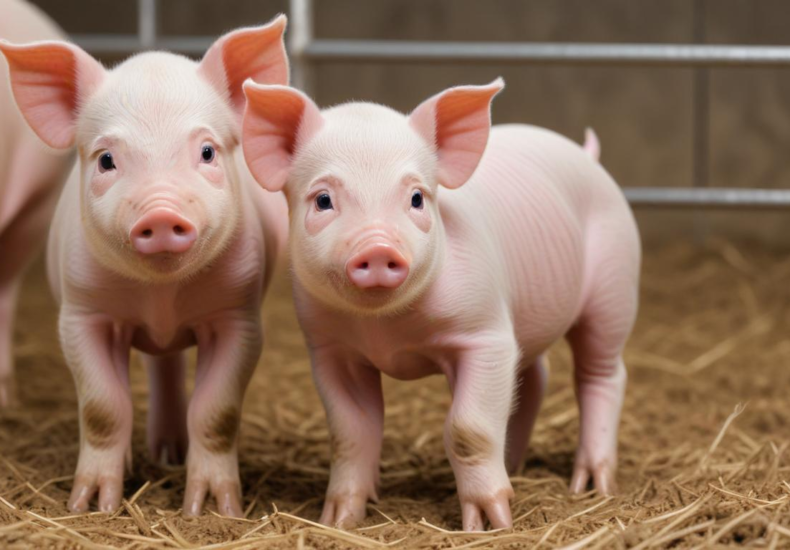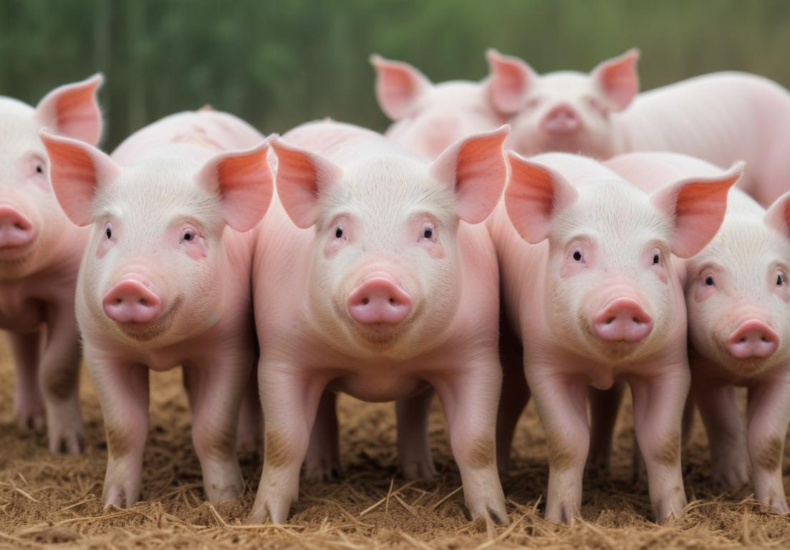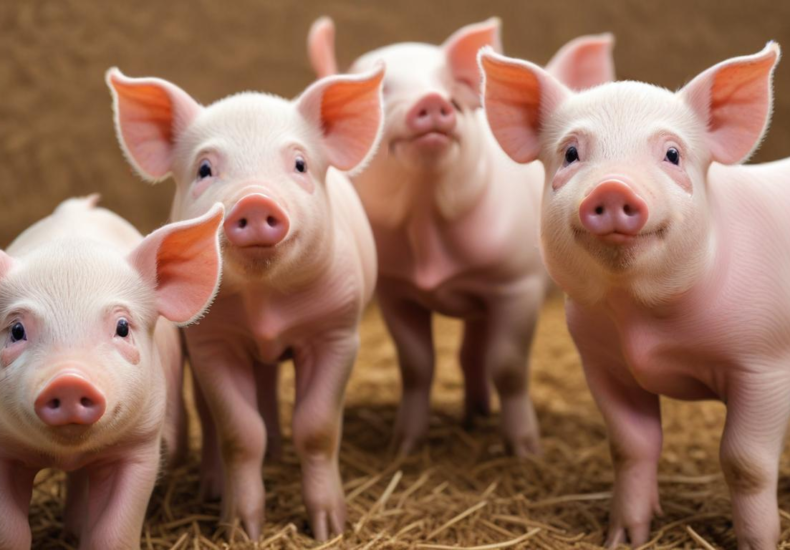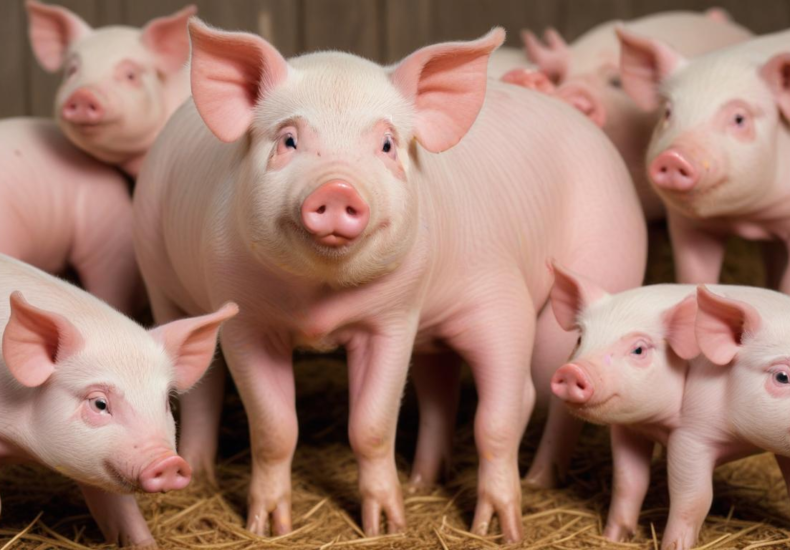Month: April 2025
genetic approaches to improving piglet survival
The genetic foundation of piglet survival is intricate, involving a variety of traits such as birth weight, morphological features, and health status at birth. Key factors influencing resilience and development include genetic diversity and advanced breeding techniques. Emerging technologies, including genomic selection and machine learning, hold promise for enhancing piglet vitality and adaptability. Collaborative efforts among geneticists and farmers aim to optimize breeding strategies, addressing both genetic potential and environmental challenges. As research progresses, innovative approaches are set to reshape pig production for better health and survival rates.
how environmental factors interact with pig genetics
The relationship between genetics and environment is pivotal in determining the growth, health, and reproductive success of pigs. Understanding how factors like temperature, humidity, and nutrition interact with genetic traits can enhance breeding strategies. By selecting for specific adaptations and improving living conditions, producers can optimize pig productivity while ensuring animal welfare. Explore how tailored approaches can contribute to more resilient swine populations in a changing climate.
genetic correlation of growth and reproduction in pigs
Delving into the genetic foundations of growth and reproduction in pigs reveals the intricate interplay of multiple genes influencing these vital traits. As breeding programs evolve, understanding heritable variations and genetic correlations becomes crucial. This knowledge could reshape strategies, balancing improvements in growth without compromising reproductive performance. Advanced genomic technologies and innovative analytical methods open new frontiers for optimizing livestock breeding. As researchers unveil the complexities of these traits, the quest for healthier pigs and sustainable production systems intensifies, promising exciting developments in swine genetics.
piglet birth weight and genetic factors
Piglet birth weight is influenced by a complex interplay of genetic, nutritional, and environmental factors. Key elements such as maternal size, gestational age, and litter size can significantly affect outcomes. Genetic traits related to growth and health, along with optimal nutrition, play critical roles in determining birth weights. Understanding these dynamics is essential for swine producers aiming to enhance piglet survival and overall health through informed breeding strategies and improved management practices. Explore the intricacies of optimizing birth weights in swine farming for better production efficiency and animal welfare.
the impact of gene flow in pig populations
Gene flow is a vital mechanism that enhances genetic diversity in pig populations, significantly influencing their adaptability and resilience. The movement of genes through natural migration and breeding practices, such as artificial insemination, helps mitigate the risks of inbreeding and promotes overall health. Understanding these dynamics is essential for breeders and conservationists, as they play a crucial role in improving traits like disease resistance and productivity. This intricate relationship between gene flow and genetic health holds important implications for agricultural practices and the sustainability of pig populations.
the basics of Mendelian inheritance in pigs
Mendelian inheritance is foundational in understanding how genetic traits are transmitted in pigs, influencing everything from coat color to growth rates. Breeders leverage principles like dominant and recessive alleles to predict outcomes and enhance desirable traits. Innovations in genomic technologies promise to further refine breeding practices, allowing for more precise selections and improved health management. As complexities of genetic interactions unfold, pig breeders are equipped to navigate challenges while paving the way for sustainable practices in animal husbandry. Discover the intricate relationship between genetics and pig breeding.
how selective breeding improves pig genetics
Selective breeding is reshaping the future of pig farming by enhancing key genetic traits crucial for productivity and sustainability. By targeting qualities like growth rate, feed efficiency, and disease resistance, breeders are cultivating pigs that meet rising market demands in an environmentally conscious manner. Advances in genomic technologies and data analytics are revolutionizing how breeders make informed selections, paving the way for healthier livestock. As the industry evolves, the integration of sustainable practices becomes paramount, ensuring that the next generations of pigs contribute positively to both economic viability and ecological stewardship.
breeding pigs for improved meat quality through genetics
Genetic selection strategies in pig breeding significantly enhance meat quality by focusing on traits that impact sensory and nutritional aspects. Advanced techniques such as genomic selection and marker-assisted breeding enable breeders to identify and select for desirable characteristics, including marbling, tenderness, and growth rates, from an early age. As molecular genetics evolves, understanding the interplay of various traits and their implications for consumer satisfaction becomes crucial, shaping the future of pork production through improved efficiency and sustainability.
inbreeding effects on pig genetics
Inbreeding in pigs significantly impacts genetic diversity, raising concerns about health, reproduction, and adaptability. As closely related individuals mate, the risk of inherited disorders increases, leading to lower fertility rates, smaller litter sizes, and altered behaviors that can disrupt social structures. Understanding these effects is crucial for breeders aiming to maintain robust populations. Strategies such as outcrossing, crossbreeding, and genomic selection offer pathways to enhance genetic variability, ensuring long-term sustainability and improved performance in pig farming. The dynamics of pig genetics call for innovative approaches to safeguard the future of breeding programs.
mapping pig genes for improved productivity
Recent advancements in pig genomics are reshaping the pork industry by enhancing breeding programs through innovative gene mapping techniques. Researchers are uncovering vital genetic markers linked to productivity traits such as growth efficiency, meat quality, and disease resistance. This transformation promises not only improved livestock performance but also sustainability in pork production. By integrating genomic data, breeders can make informed selections that address market demands while promoting animal welfare. The future of pig farming hinges on this genetic revolution, steering the industry toward greater efficiency and resilience.









